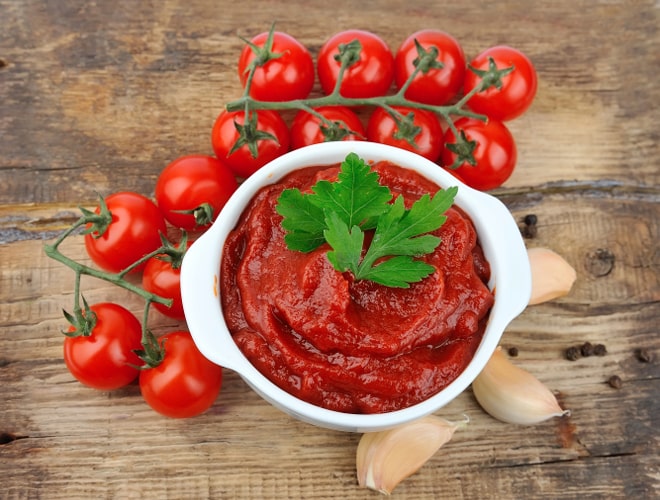Popular for many years before food processors and blenders hit the culinary scene, manually operated food mills perform a task that their electric counterparts can’t. In addition to pureeing whole foods like apples and tomatoes, food mills strain out seeds and skin as they work, leaving you with fresh, rich homemade sauces.
These uncomplicated kitchen gadgets used by our grandmothers to make everything from tomato and apple sauce to mashed potatoes, jelly and juice, are simple to use. You just prepare the items to be milled, throw them in and start cranking. As you crank, the food is pushed through a perforated disk-shaped sieve, leaving seeds and skin behind and resulting in a dense, ultra-smooth puree.
Before adding a food mill to your collection of culinary gadgets, familiarize yourself with these top 5 traits that make a quality mill:
1. Capacity
The size of a food mill’s hopper, which is the bowl into which you put the food to process, affects how much food it can mill at once. There is everything from small food mills capable of grinding a cup or two of food at a time to large food mills that will process eight quarts at once.
Some food mills come with an attachable bowl into which the processed food falls, while others are equipped with a hook and handle or movable side leg hinges that secure the mill over a bowl or stock pot.
The size food mill you choose will depend on how much food you expect to process at once. If you just want to make small batches of baby food, a small capacity food mill will suffice, but if you have a large family and expect to process big batches of foods like mashed potatoes, you’d be wise to choose a larger capacity model.
2. Ease of Use
Since you’ll be doing all of the work, it’s important that the food mill you choose is easy to crank. Some come with ergonomic handles, which puts less strain on you. If possible, try cranking several food mills before making your final decision.
3. Cleaning simplicity
The food mill should be easy to disassemble for cleanup. Look for food mills with removable, rather than fixed, disks, the latter of which are significantly more difficult to clean.
4. Interchangeable disks
The most versatile food mills have interchangeable disks featuring various hole sizes, enabling you to choose the texture of the foods you mill. The different sized disks generally allow you to puree foods either fine, medium or coarse. This versatility is important if you wish to process a wide range of foods with varying consistencies.
5. Materials
Original food mills were made of lightweight and durable tin, and they are still available in this metal today. Stainless steel food mills are also common. Such models tend to be well constructed and durable, and the fact that they are non-staining means they tend to stay looking brand new. Plastic food mills also exist, and they tend to work well, but over time, plastic doesn’t hold up like metal, so it’s best not to buy this type of mill if you expect heavy usage.
Now that you know the basics when it comes to choosing the perfect food mill, you can get cranking and make Grandma proud.
Are you a fan or those simpler kitchen gadget days? Share you thoughts in the space below.
Julie Bawden-Davis

